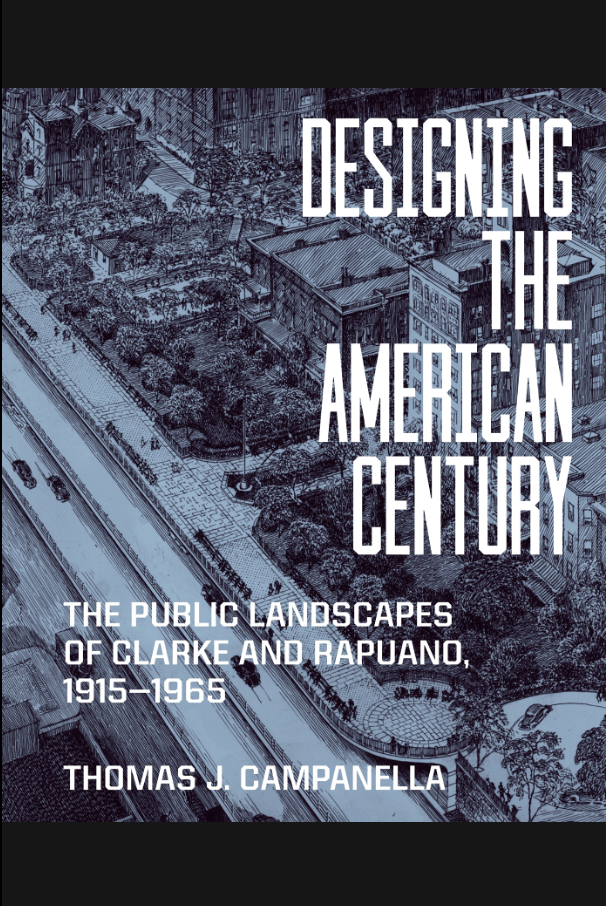In his new book Designing the American Century: The Public Landscapes of Clarke and Rapuano, 1915-1965, Thomas J. Campanella argues that Gilmore D. Clarke and Michael Rapuano were the foremost spatial designers at work in the mid-20th century. Their vast portfolio of public landscapes propelled the legacy of Frederick Law Olmsted and Calvert Vaux into the motor age, touching the lives of millions and changing the face of the nation. With the patronage of public-works titan Robert Moses, Clarke and Rapuano transformed New York over a span of fifty years, revitalizing the city’s immense park system, but also planning expressways, public housing, and urban renewal projects that demolished entire sections of the city. Campanella describes how Clarke and Rapuano helped create many of the city and region’s most iconic landscapes, including the Central Park Zoo and Conservatory Garden, Riverside Park, Jones Beach, the Brooklyn Heights Promenade, and the Palisades and Taconic State Parkways.
Beyond New York, Clarke and Rapuano shaped projects as diverse as Yellowstone’s Mammoth Hot Springs, the Mount Vernon Memorial Highway, and the site plans for the Pentagon and CIA headquarters. Campanella recovers the forgotten legacy of the firm whose parks and parkways, highways and housing estates helped modernize—for better or worse—the American metropolis.
Thomas J. Campanella
Thomas J. Campanella is professor of urban studies and city planning at Cornell University and Historian-in-Residence of the New York City Department of Parks and Recreation. His books include Brooklyn: The Once and Future City, The Concrete Dragon: China’s Urban Revolution and What It Means for the World, and Republic of Shade: New England and the American Elm. His writing has appeared in the New York Times, the Wall Street Journal, Slate, and The New Yorker.
The video begins with a talk by Thomas J. Campanella, followed by an introduction by Museum Director Carol Willis. A Q&A session with the audience concludes the program.
